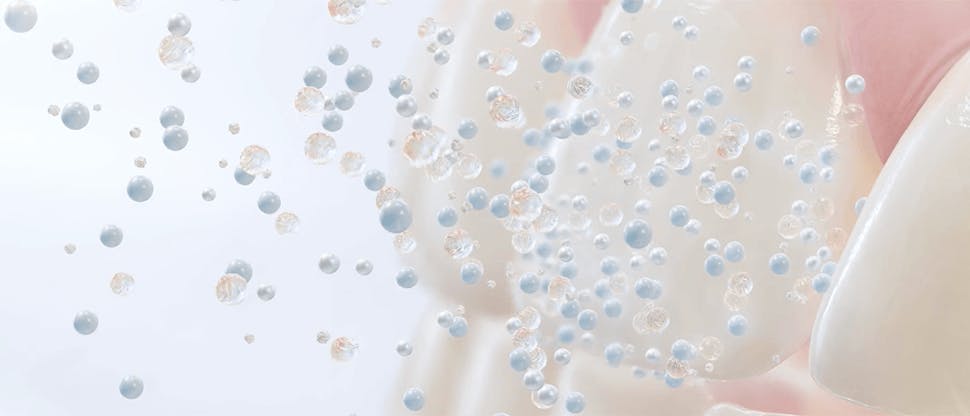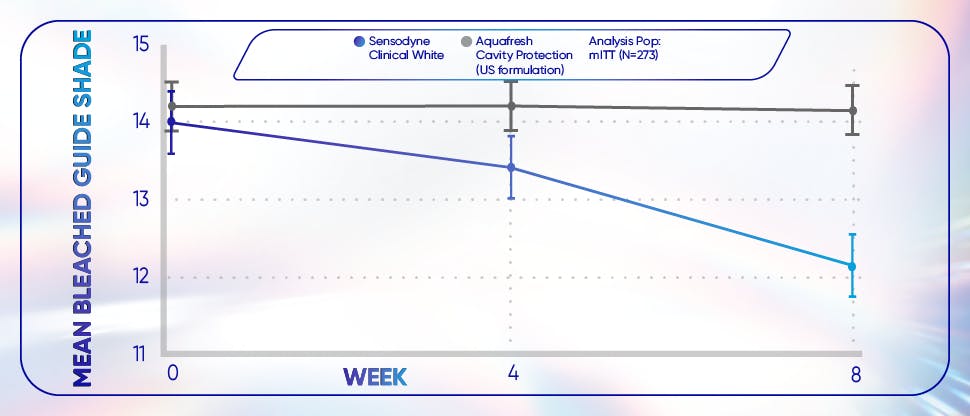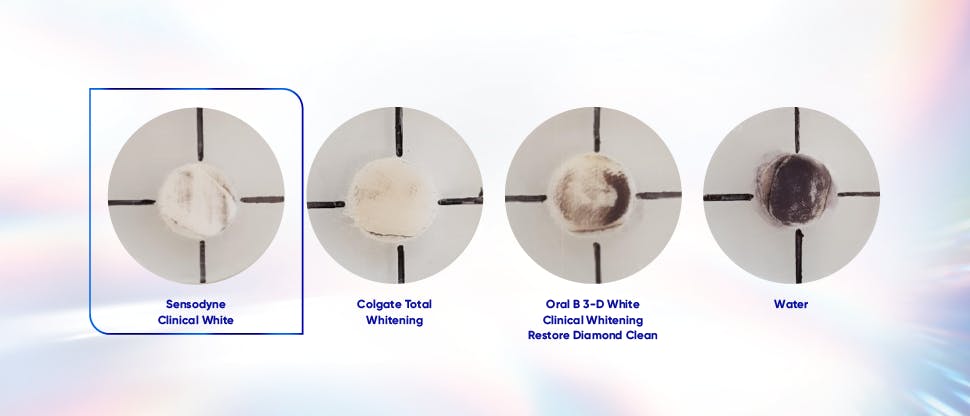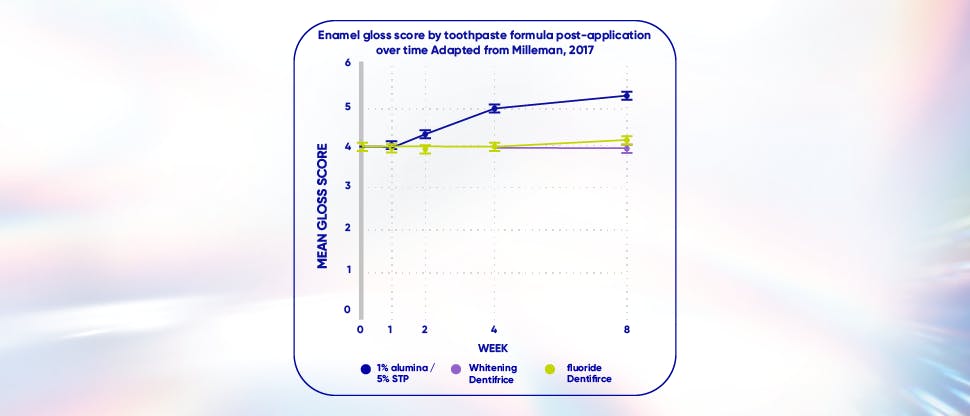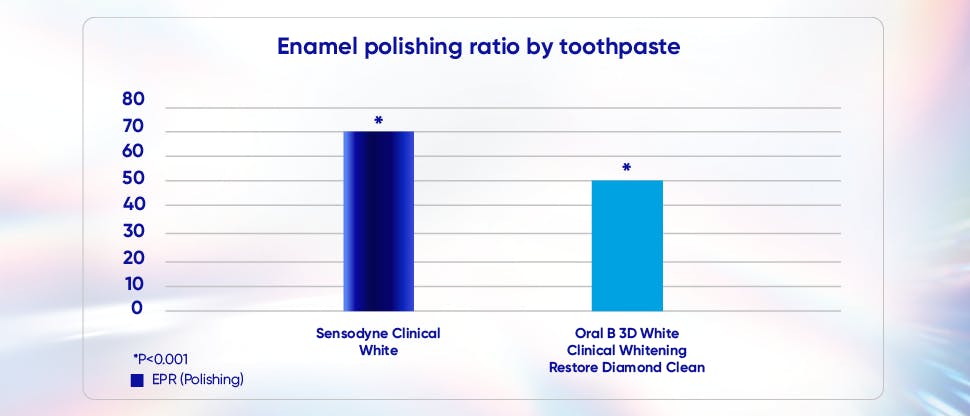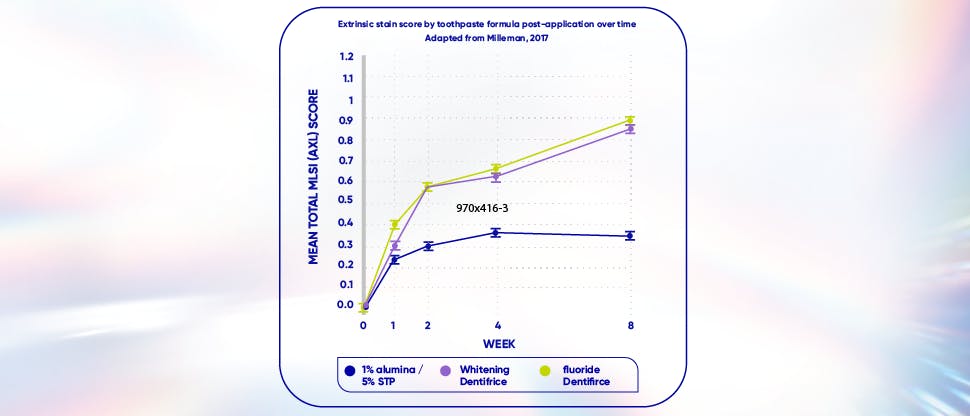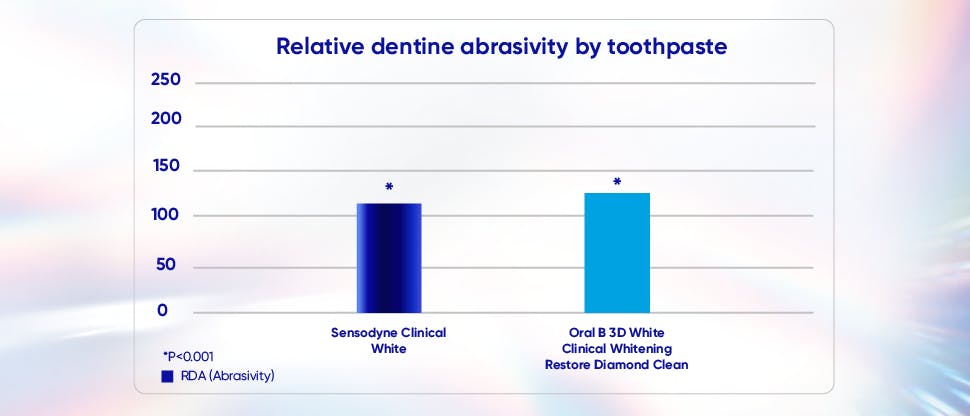Sensodyne Clinical White Toothpaste

Clinically proven whitening technology specially designed for sensitive teeth
Patients want whiter teeth, despite sensitive teeth.1,2
86% of people with sensitive teeth wish they had whiter teeth but may be concerned about the possible damage caused by teeth whitening.2
50% of people experience sensitive teeth when whitening however they still want whiter teeth.2,3
Now you have this option for your patients with sensitive teeth who seek a whitening action.
Sensodyne Clinical White can be used to help care for sensitive teeth before, during and after professional whitening treatment.*
*start using at least 2 weeks before the whitening procedure

Caring for sensitive teeth has never looked whiter*
An enamel safe formula to whiten, polish and help protect teeth from future stains, whilst caring for sensitive teeth**.
Sensodyne Clinical White toothpaste contains:
- Alumina – which works to lift and remove stains4-8
- Sodium tripolyphosphate (STP) – which works to repel stains from the tooth surface and prevent new stains from forming7,8
Sensodyne Clinical White is gentle on teeth. It whitens sensitive teeth without peroxide.
*with 2 shades whiter teeth after 8 weeks of twice daily use**with twice daily brushing
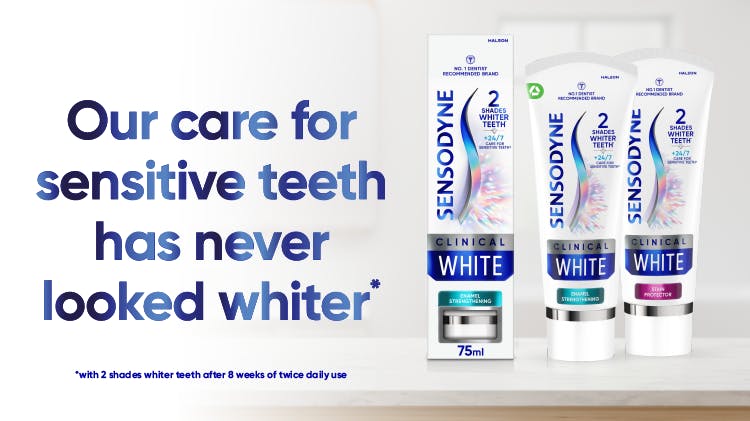
Sensodyne Clinical White toothpaste
Caring for sensitive teeth before, during and after professional whitening and helping to keep teeth free from stains post professional whitening*.
*start using at least 2 weeks before the whitening procedure
No 1 dentist recommended toothpaste brand for sensitive teeth^
^Dentist survey, UK, 2023. For verification mystory.gb@haleon.com

